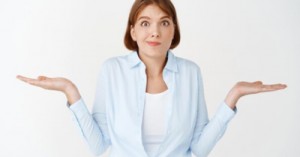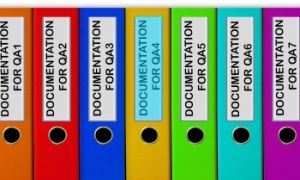Play is a process that is freely chosen, personally directed and intrinsically motivated. In this sense, children’s play happens when children determine and control the content and intent of their play, following their own instincts, ideas and interests, in their own way for their own reasons. The following article provides an overview of the different roles of educators in play and how each can be best performed in an ECEC setting.
Provider
A provider notes what the children are trying to do and then thinks about what can be provided so that play can proceed smoothly. For example, a provider may arrange:
- space for play, like designing the learning environment in a way so as to offer a mix of play experiences including individual play like with toy trucks, group play like doll’s tea party, quiet play like with puzzles and colours as well as noisy play like role play like a game of tag or jamming with music. The right physical environment should also be safe, free of hazards, and offer a mix of built and natural elements as well as shade in the outdoors.
- special materials for play. For one, educators should ensure the availability of different types of materials like paint, blocks, manipulatives, musical instruments, playground equipment as well as dress-up costumes and props so that children can exercise choice in play. But this also involves keeping materials and equipment within children’s reach like on low-level shelves.
- more time for play. The careful provision means the educator should support the play and allow it to continue. They can extend the play by giving children permission, and unhurried time to think about what and how to go about their play.
Some reflection questions that can support educators in the role of the provider are:
- Are there program practices, like taking photos for documentation, that interfere with good play?
- Should play spaces be closed in the early morning or evening? Are there rules that limit where children can use certain materials?
- Outside, do children have opportunities for gross motor play, construction play, and also pretend play?
Observer
An observer watches listens and tries to figure out what the play is about by understanding the children’s perspectives and interests. Careful observation of children’s play helps an educator to:
- gain knowledge of children’s strengths and preferences
- understand how the environment is working for children – for example, does it provide
- the potential for a wide range of experiences or support only a particular type of, like verbal play, thereby risking the exclusion of non-verbal children
- understand how children are using materials like loose parts or natural elements
- look out for things like play types which can give a richer understanding of what is happening during children’s play; for example, if the educator finds children getting better at pretend play it shows their growing ability to understand abstractions which in turn can guide learning experiences in literacy and numeracy.
- have a better idea of what to say or do to extend children’s play if the opportunity arises; this also makes it less likely to say or do something that disrupts children’s play, and you will.
It is common for educators to start off by being an observer and then move into one of the other play roles.
Some of the methods, educators can use to observe children’s play are:
- noticing – for example, making mental notes
- photographic – for example, taking pictures or short videos as and when things happen
- timeline – for example, identifying a child or area and then perhaps checking in every 10 minutes.
- frameworks – for example, checklists or looking for characteristics, like physical development milestones for a certain age group
- focussed – for example, looking at a specific area or child for a period of time
- written – for example, an account or detailed ‘story’.
Among the above observation methods, noticing is one of the most effective in children’s play. It enables educators to pay attention to the subtleties of what children are doing and saying. This informal and ongoing approach is key to tuning in to children’s emotions and understandings which makes it particularly useful in supporting and extending children’s play.
Mediator
A mediator helps children solve problems that crop up during play when the children can’t solve these problems themselves. To act as a mediator, educators need to remain alert to spot moments when children get stuck. For example, when an argument threatens to stop the play, this is a sign that your mediation is now needed. You can then:
- step in and make a suggestion that would resolve the argument
- offer an alternative to continuing the play while leaving the cause of the argument to be resolved at another time
- model a new way to act to solve the problem
- support the children to work out a way to enable the play to continue.
When called upon to mediate a dispute during play, the educator can look upon it as an opportunity for extending children’s skills in problem-solving. This is because children will most likely remember and copy the educator’s problem-solving solutions in future play.
It is important to remember that as a mediator, an educator does not focus on rule enforcement such as “inside voices” or “only three in the doll corner.” The content of the play matters more and the goal of the mediation is to sustain the play, not interrupt it—“Jerry, tell Mariana why you’re so upset. Mariana, tell Jerry why you’re so upset. And then we can talk about how you want to solve the problem.”
Player
In this role, the educator joins in with the children’s play. The role of the player can seem pretty straightforward to an adult, for example being a student to the child acting as a teacher in a school-based role play should come easy considering you are in this setting every day, but it is important to think deeply before you join in. This is because of the tendency of adults to take over the play and that of children to naturally defer to an authority figure. Even more worryingly, educators often co-opt children’s agendas by using play to teach concepts. “Is your car going down? Is it going down the freeway ramp? Is it going fast? How many cars do you have? Is your car going up again? Ebony, can you answer my question?” Such interventions are not only likely to interfere with the flow of the play but can make children wary of including an adult as a player the next time. Educators can be actively involved in play as long as they respect that the play belongs to the children. Being a player also lets you:
- extend play by modelling new ideas
- to assist new players to find a role
- to help children act out scenes or ideas that they don’t know much about.
In all these ways, educator-as-player assists children to keep their play going for a longer period of time.
In order to know when to join children’s play, educators must be aware of play cues. Children communicate these cues or invitations to play in different ways, sometimes verbally but often through gestures, posture or expressions like:
- tap on the shoulder and run away laughing
- make a funny face at someone
- wink
- throw a ball to someone
- move closer to someone with things to play with
- allocate roles e.g. “you can be the dragon”
- make space in a group for someone else to join.
Being invited to join in the play is a mark of trust that children place in the educator and responding to it is a powerful way to build positive bonds.
Scribe
While children may not be able to write themselves, they do recognize the power of written words and may thus rope in their educator as a scribe to support their play. For example, two children playing hospital may ask their educator to write a sign “Don’t knock over this hospital! Sammie and Rachel” as a way of cautioning other kids about moving around the area of the block.
Indeed the role of the scribe can combine naturally with the player when the teacher writes words dictated by children, for example, “Will you write “popsicles” on my shopping list?” In this way, the role of the educator as a scribe can even support children’s early literacy and number learning through play.
Assessor and Communicator
Another significant role for the educator vis-à-vis children’s play is that of an assessor. In this role, the educator documents children’s play through sketches, children’s words, photos and notes taken during play. Representing children’s play in panels, storytelling, and online documentation are some of the many ways teachers can share the concepts and content of children’s play. Though much of all this takes place after the play has ended, the role of the assessor is crucial in understanding how children’s play is facilitating learning. Also by documenting play, the educator plays an important role in communicating the play’s meaning to parents.
Further Reading
Using Open-Ended Questions with Children - The following article provides open-ended questions for children to develop their language skills.
Observations in Childcare - The following article provides information on the purpose of observations, interpreting observations, observation samples and more.
References:
- Loose Parts Play Toolkit, Play Scotland
- Communicating Positively, Aspie Education
- Play and The Teacher's Role, School Bag Info







 As an Educator in Australia, your pay rate falls under the Children’s Services Award 2010. This award states the minimum amount that an employer can
As an Educator in Australia, your pay rate falls under the Children’s Services Award 2010. This award states the minimum amount that an employer can When working as a qualified Early Childhood Teacher (with a university degree) within a service, your rate of pay will come from the Educational Services
When working as a qualified Early Childhood Teacher (with a university degree) within a service, your rate of pay will come from the Educational Services When working as a Diploma Qualified Educator your pay rate is from the Children's Services Award 2010. This Award states your minimum rate of pay
When working as a Diploma Qualified Educator your pay rate is from the Children's Services Award 2010. This Award states your minimum rate of pay When working as a Cert 3 Qualified Educator, your pay rate is from the Children's Services Award 2010. This Award states your minimum rate of
When working as a Cert 3 Qualified Educator, your pay rate is from the Children's Services Award 2010. This Award states your minimum rate of Educational Leaders play a crucial role in their early childhood service by ensuring that the educational program aligns with best practices and supports the holistic
Educational Leaders play a crucial role in their early childhood service by ensuring that the educational program aligns with best practices and supports the holistic In early childhood education and care, ratios are more than a technicality—they are a frontline safeguard. Every child deserves responsive supervision, emotional connection, and developmental
In early childhood education and care, ratios are more than a technicality—they are a frontline safeguard. Every child deserves responsive supervision, emotional connection, and developmental With the new national child safety reforms kicking in on 1 September 2025, early childhood services like yours have a real opportunity to lead the
With the new national child safety reforms kicking in on 1 September 2025, early childhood services like yours have a real opportunity to lead the Here’s a comprehensive Mobile Phone and Smart Watch Policy tailored for early childhood education and care (ECEC) services in Australia, aligned with the latest 2025
Here’s a comprehensive Mobile Phone and Smart Watch Policy tailored for early childhood education and care (ECEC) services in Australia, aligned with the latest 2025 The Sea of Fish Challenge is a national initiative that invites children, educators, families, and communities to create and display fish artworks as a symbol
The Sea of Fish Challenge is a national initiative that invites children, educators, families, and communities to create and display fish artworks as a symbol Across the early childhood education and care sector, educators are sounding the alarm: current staffing ratios are insufficient to deliver safe, meaningful, and developmentally appropriate
Across the early childhood education and care sector, educators are sounding the alarm: current staffing ratios are insufficient to deliver safe, meaningful, and developmentally appropriate


